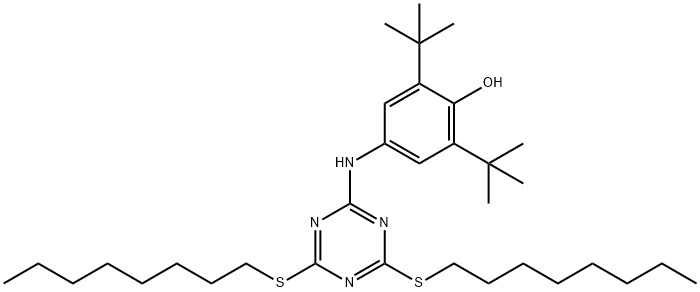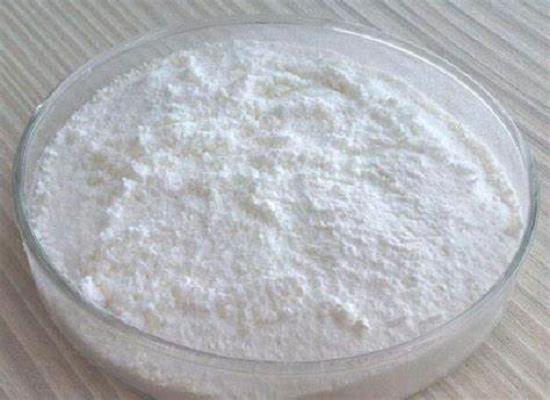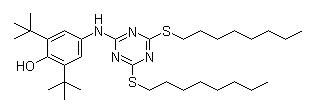Antioxidant 565: Benefits, Polymer Applications and Preparation Method
General Description
Antioxidant 565 offers numerous benefits due to its high effectiveness at low concentrations. It excels in performance while requiring lower levels compared to other stabilizers, with non-staining properties and low volatility for enhanced longevity. In polymer applications, Antioxidant 565 is widely used in various elastomers and copolymers, adhesives, resins, and other materials to prevent gel formation, maintain color quality, and preserve molecular weight integrity. The preparation method of Antioxidant 565 involves intricate steps ensuring high efficiency and purity, ultimately yielding a product with safe reactions, superior quality, and wide industrial applications. Overall, Antioxidant 565 proves to be a valuable additive for enhancing stability and longevity across diverse polymer products.

Figure 1. Antioxidant 565
Benefits
Antioxidant 565 offers a range of benefits due to its high effectiveness at low concentrations. Despite requiring lower levels compared to other stabilizers, Antioxidant 565 matches their performance efficiently. One key advantage is its non-staining property, making it ideal for various applications. Additionally, its low volatility ensures that it remains intact throughout polymer processing, drying, and storage processes, enhancing its longevity and effectiveness. Specifically, in unsaturated elastomers, Antioxidant 565 plays a crucial role in preventing gel formation, preserving the polymer's color quality, and maintaining the molecular weight integrity, such as Mooney viscosity. These properties contribute to the overall stability and durability of the materials, ensuring long-lasting performance and quality in a wide range of industrial applications. 1
Polymer Applications
Antioxidant 565, commercially known as Irganox® 565, is a highly effective antioxidant widely used in various polymer applications. Specifically, Antioxidant 565 finds extensive use in elastomers such as polybutadiene (BR), polyisoprene (IR), emulsion styrene butadiene (SBR), nitrile rubber (NBR), carboxylated SBR Latex (XSBR), as well as styrenic block copolymers like SBS and SIS. Apart from elastomers, Antioxidant 565 is also utilized in adhesives (hot melt, solvent-based), natural and synthetic tackifier resins, EPDM, ABS, high impact polystyrene, polyamides, and polyolefins. Guidelines for the application of Antioxidant 565 recommend varying use levels depending on the specific polymer, typically ranging from 0.05% to 0.5%. The antioxidant's relatively low melting point facilitates easy dispersion within elastomeric substrates through commonly employed melt compounding techniques. Alternatively, it can be introduced into process streams by dissolution in suitable organic solvents or aromatic extender oils. For further details on the performance of Antioxidant 565 in different substrates, extensive performance data can be made available upon request. Overall, the versatility and efficacy of Antioxidant 565 make it a valuable additive in enhancing the stability and longevity of various polymer products across a wide range of applications. 1
Preparation Method
The preparation method of antioxidant 565 involves several intricate steps that ensure high efficiency and purity of the final product. To start, 2,6-di-tert-butylphenol is utilized as the raw material. This compound is dissolved in an organic solvent to create a solution, which is then mixed dropwise with a sodium nitrite solution to form a 2,6-di-tert-butyl-4-nitrosophenol solution. Next, this solution undergoes reduction in the presence of nickel as a catalyst and carbon monoxide to yield an aminophenol solution. Following this, iron crystals are added to react with any remaining carbon monoxide, resulting in the production of carbon dioxide and carbon elements. The resulting aminophenol solution is then filtered to remove carbon elements, leaving behind a filtrate that is further processed. Subsequently, the filtrate is condensed with melamine in the presence of 6-(4-hydroxy-3,5-di-tert-butylaniline)-2,4-dichloro-1,3,5-triazine, 6-(4-hydroxy-3,5-di-tert-butylphenylamino), and n-octyl mercaptan. Through this condensation reaction, antioxidant 565 is obtained, which boasts safe reactions, high catalyst efficiency, superior product quality, and a favorable yield. Overall, this method provides a reliable and effective approach for the industrialized production of antioxidant 565 with wide applications in the field of chemical substances. 2
Reference
1. Irganox® 565: Phenolic Primary Antioxidant for Processing and Long-Term Thermal Stabilization. Technical Information Plastic Additives. 2020; TI/EVK 1022e: 1-2.
2. Zhang W, Luo S. Method for synthesizing antioxidant 565. 2020; Patent Number: CN113880782.
Related articles And Qustion
Lastest Price from Antioxidant 565 manufacturers

US $8.80-2.20/kg2025-06-28
- CAS:
- 991-84-4
- Min. Order:
- 1kg
- Purity:
- 99%
- Supply Ability:
- 100kg

US $0.00/Kg/Drum2025-04-21
- CAS:
- 991-84-4
- Min. Order:
- 1KG
- Purity:
- 99%min
- Supply Ability:
- 1000kg




